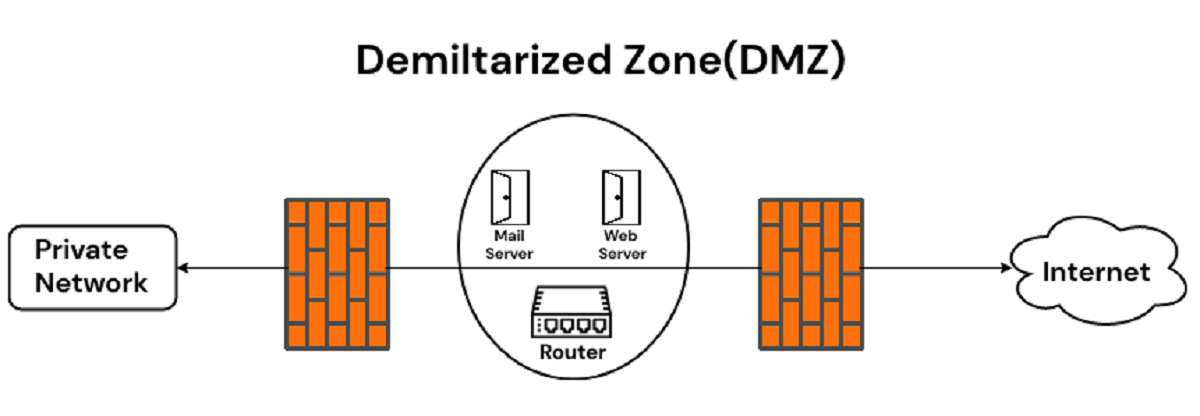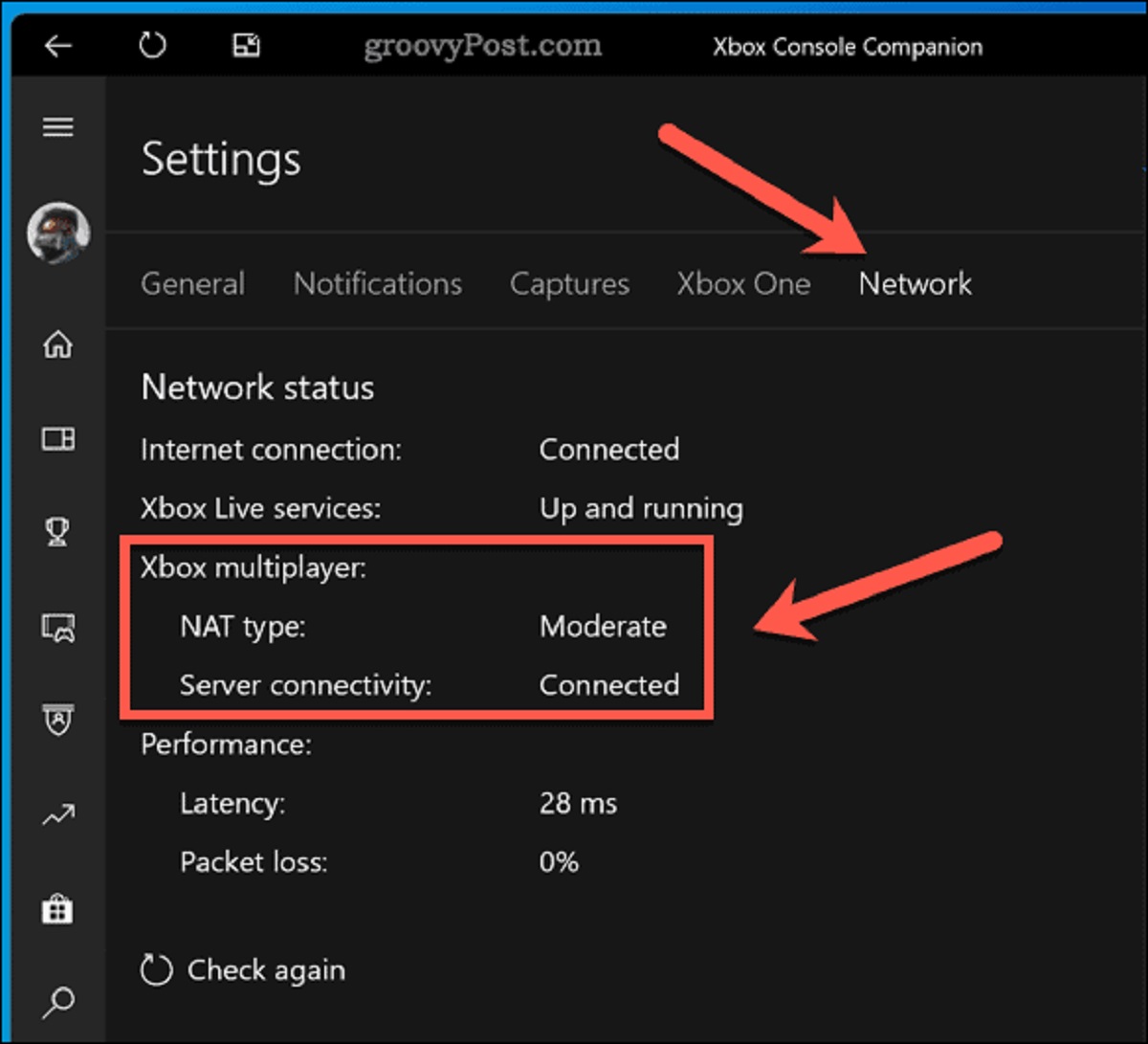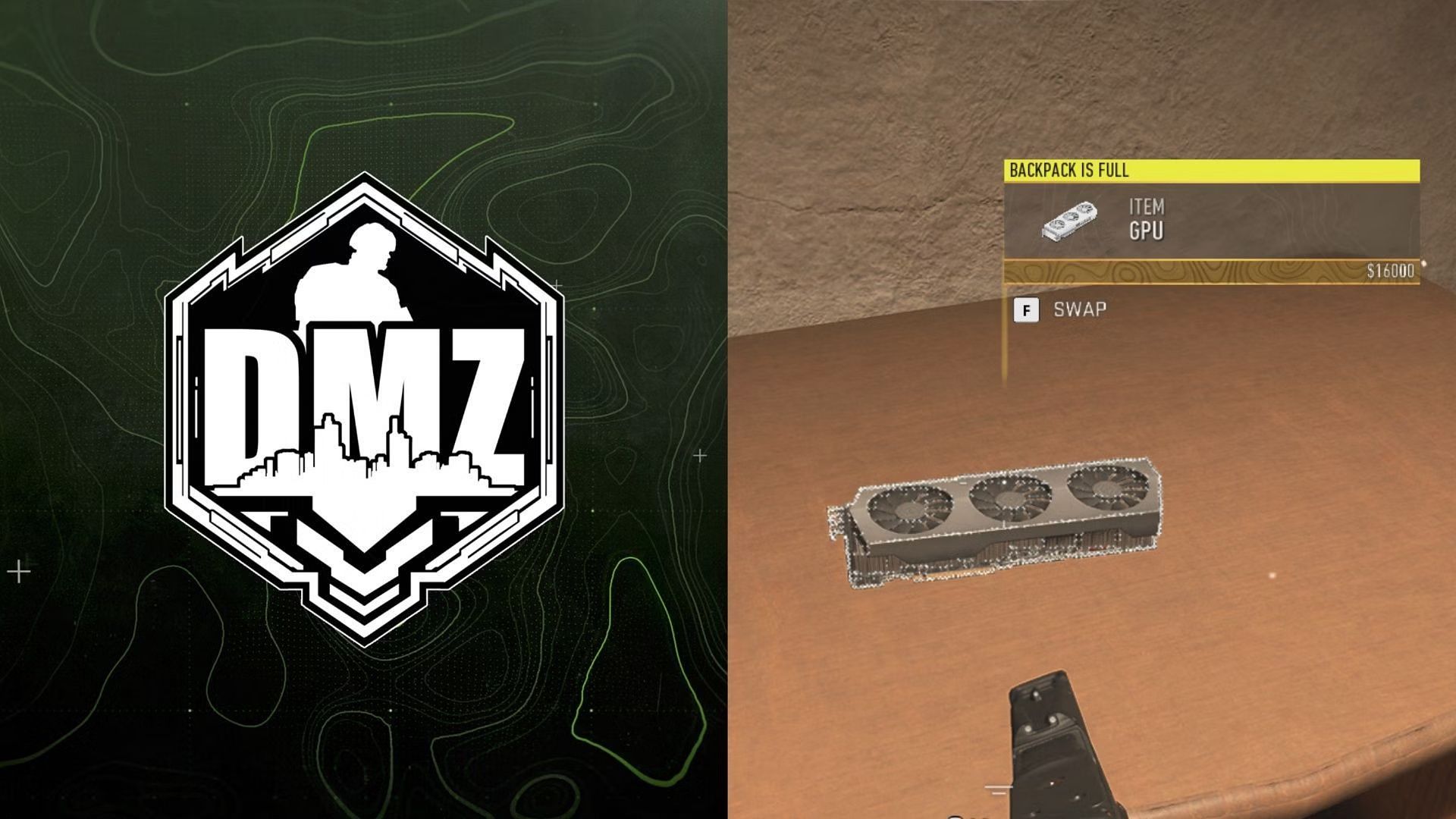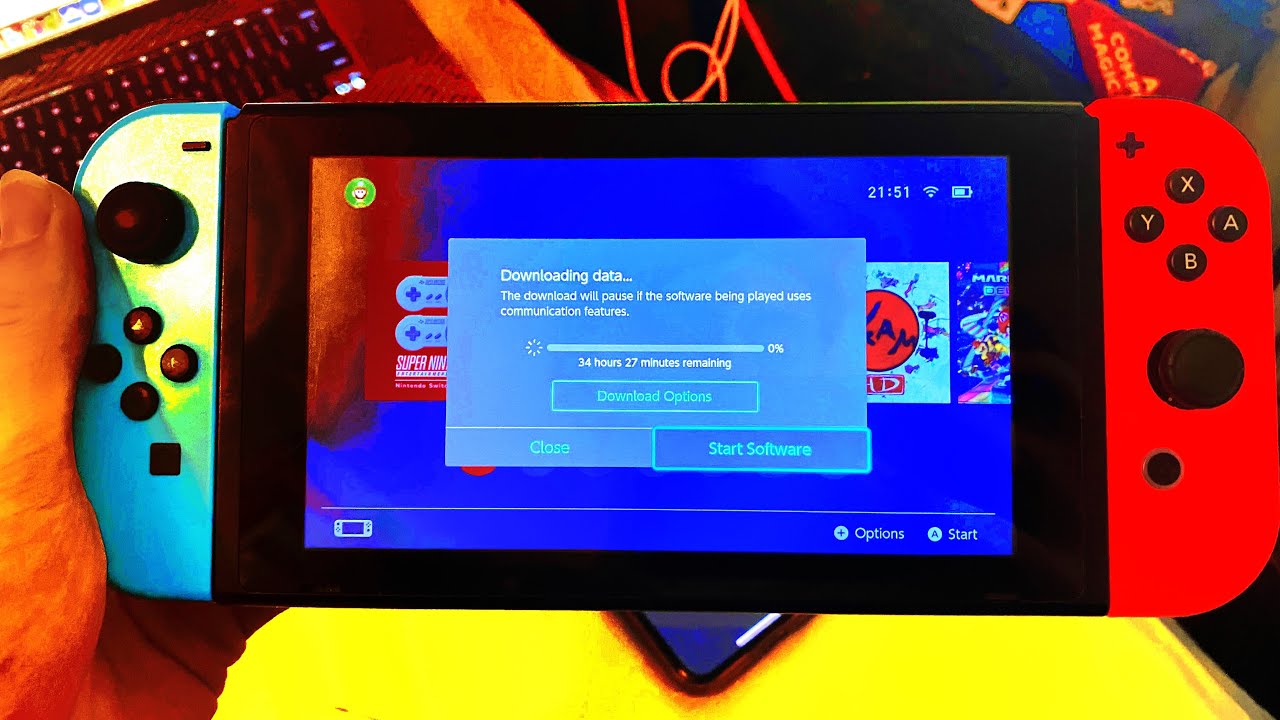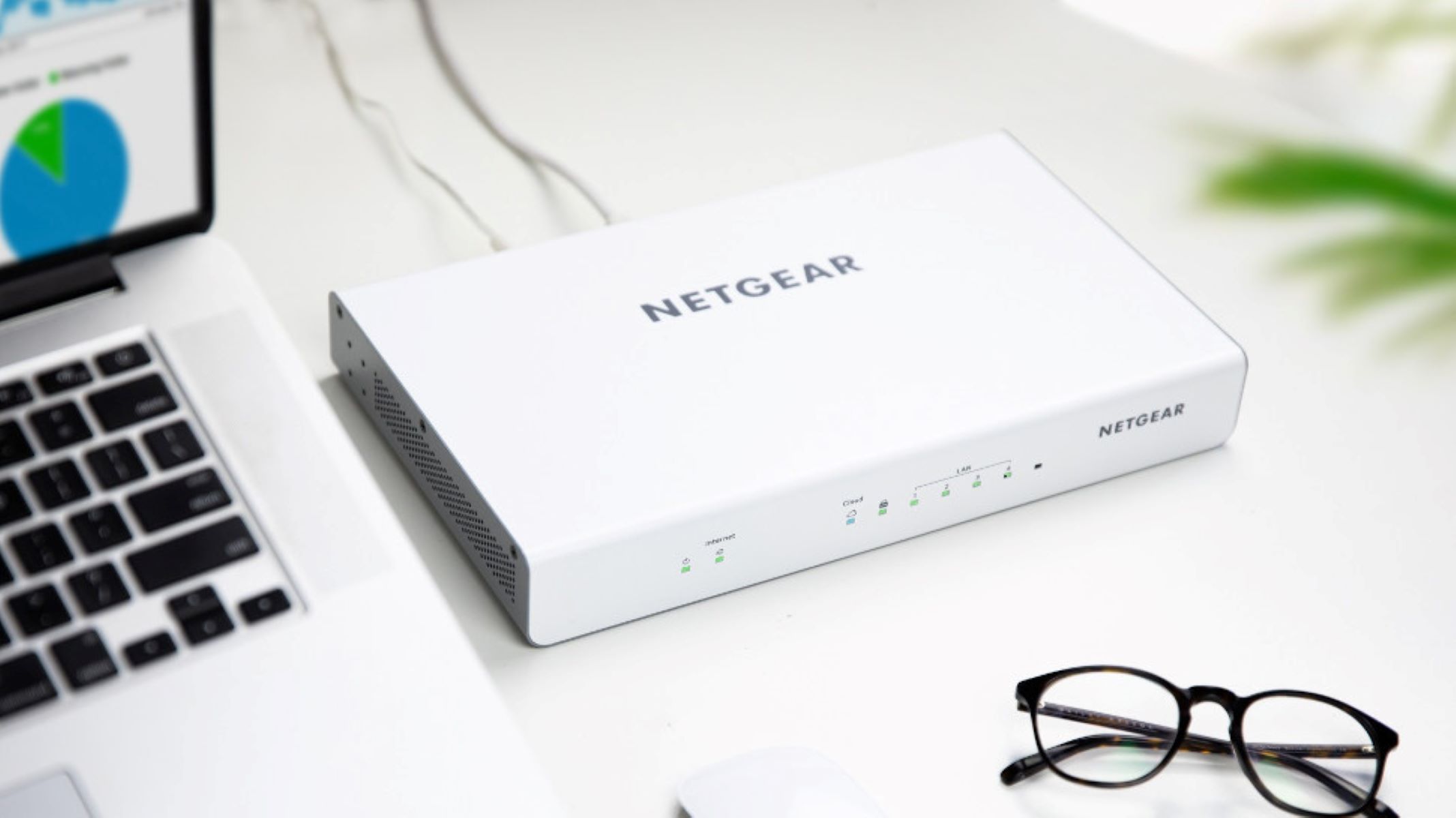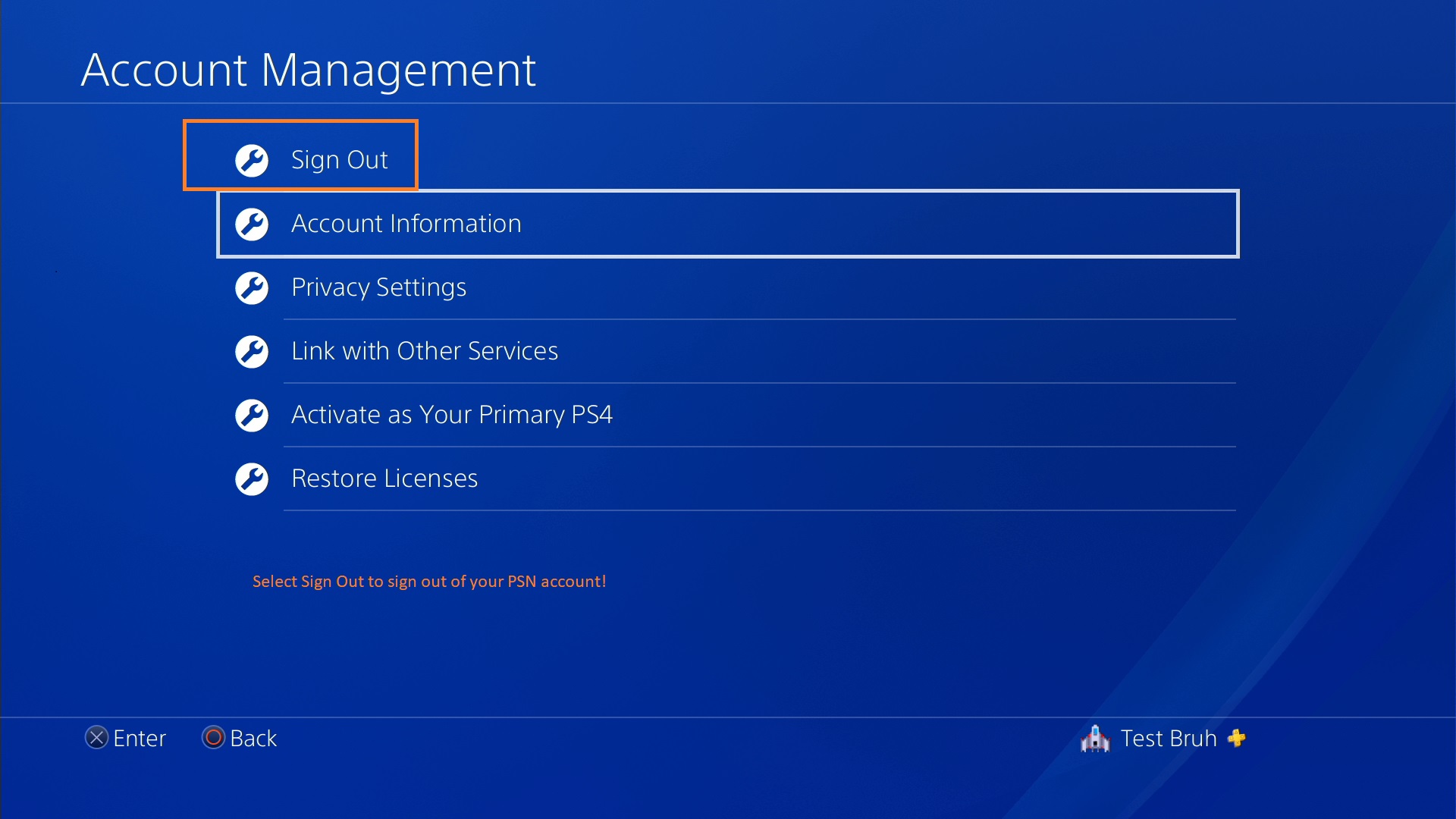What Is A DMZ In Cybersecurity
In the world of cybersecurity, a DMZ stands for “Demilitarized Zone,” which refers to a separate network segment that acts as a buffer zone between an organization’s internal network and the external network, typically the internet. The primary purpose of the DMZ is to ensure a layer of security by segregating critical systems and sensitive data from potential attackers.
A DMZ is like a digital fortress that allows controlled but limited access to specific services from the internet while minimizing the risk of unauthorized access to the internal network. It acts as a barrier, protecting internal assets such as servers, databases, and applications from direct exposure to outside threats.
The concept of a DMZ can be likened to the layout of a military base. External visitors are only allowed access to the public areas, such as the entrance and visitor’s center, while the vital military operations are conducted within restricted areas, away from prying eyes. Similarly, in a DMZ, public-facing services like web servers, email servers, and DNS servers are placed in the DMZ network, while critical resources are kept safe inside the internal network.
By implementing a DMZ, organizations restrict external access to their sensitive data and infrastructure. This isolation helps prevent attackers from directly infiltrating the internal network, providing an additional layer of defense against potential threats. In the event of a security breach or attack, the DMZ limits the attacker’s access and reduces the overall impact on the internal network.
A well-designed DMZ consists of multiple layers of protection. It typically includes firewalls, intrusion detection systems (IDS), intrusion prevention systems (IPS), and other security mechanisms to closely monitor and control traffic flowing between the internal network, the DMZ, and the internet. This layered approach ensures that incoming traffic is thoroughly inspected and potential threats are mitigated before they can reach the internal network.
Definition of a DMZ
A DMZ, which stands for “Demilitarized Zone,” is a network architecture concept in cybersecurity that involves the creation of a separate and isolated network segment. This network segment acts as a buffer zone between the internal network of an organization and the external network, typically the internet.
The main purpose of establishing a DMZ is to enhance the security of an organization’s network infrastructure by segregating critical systems and sensitive data from potential attackers. It serves as a barrier that allows controlled but limited access to specific services from the internet while minimizing the risk of unauthorized access to the internal network.
Think of a DMZ as a secure area within a military base. Visitors are allowed access to the public areas, but the high-security sections remain separate and protected. In the same way, a DMZ ensures that public-facing services, such as web servers, email servers, and DNS servers, are located in the DMZ network. This isolates them from the critical resources, servers, databases, and applications located within the internal network.
In a DMZ, the external network can send traffic to the servers and services located in the DMZ, but direct access to the internal network is restricted. This segregation reduces the attack surface, limiting the potential impact of security breaches or attacks on the internal network.
To establish a DMZ, organizations typically deploy multiple layers of security mechanisms, including firewalls, intrusion detection systems (IDS), intrusion prevention systems (IPS), and other network security devices. These devices work together to monitor and control the traffic flowing between the internal network, the DMZ, and the external network. This ensures that malicious traffic is detected and mitigated before it can reach the internal network.
Overall, a DMZ is a crucial component of a robust cybersecurity strategy. It provides an additional line of defense by isolating critical assets from potential threats and controlling the flow of network traffic. By implementing a DMZ, organizations can maintain the confidentiality, integrity, and availability of their sensitive data and infrastructure.
Purpose of a DMZ
The primary purpose of a DMZ (Demilitarized Zone) in cybersecurity is to enhance the security posture of an organization’s network infrastructure. It serves as a protective barrier between the internal network and the external network, such as the internet. The DMZ achieves this by segregating critical systems and sensitive data from potential attackers, ultimately reducing the risk of unauthorized access and potential security breaches.
One of the key purposes of a DMZ is to provide controlled but limited accessibility to public-facing services. These services, which can include web servers, email servers, DNS servers, and other publicly accessible resources, are placed in the DMZ network. By isolating these services in a separate network segment, organizations can limit the exposure of their internal network to potential threats.
Another purpose of a DMZ is to provide a platform for securely hosting external-facing services. It allows organizations to offer services to external users while placing them outside the trusted internal network. This ensures that if any vulnerabilities are exploited or compromises occur, the impact on the internal network is minimized.
The DMZ also acts as a gateway for incoming network traffic. It enables organizations to closely monitor and control the traffic flowing between the internal network, the DMZ, and the external network. This control layer adds an additional security measure by inspecting incoming traffic for potential threats, filtering out malicious requests, and preventing unauthorized access attempts.
Furthermore, the DMZ allows organizations to implement additional security measures and technologies that further enhance their overall security posture. This can include features like firewalls, intrusion detection systems (IDS), intrusion prevention systems (IPS), secure VPN gateways, and more. These security mechanisms provide real-time monitoring, threat detection, and prevention, ultimately ensuring the integrity and confidentiality of the internal network.
Overall, the purpose of a DMZ in cybersecurity is to establish a layer of defense that protects critical assets and sensitive data by separating them from potential attackers. By implementing a DMZ, organizations can reduce the attack surface, detect and prevent malicious activity, and maintain the integrity and availability of their network infrastructure and services.
Components of a DMZ
A DMZ (Demilitarized Zone) in cybersecurity comprises several key components that work together to create a secure network architecture. These components are carefully designed to provide controlled access to public-facing services while maintaining the security of the internal network. Here are the main components of a DMZ:
- External Network: This component refers to the external network, typically the internet, from which traffic flows into the DMZ. It represents the public-facing side of the network, where incoming connections originate.
- Firewalls: Firewalls are a crucial component of a DMZ, acting as the first line of defense. They analyze incoming and outgoing network traffic and enforce security policies. In a DMZ, firewalls are strategically positioned to permit only authorized traffic and prevent unauthorized access.
- DMZ Network: The DMZ network is a separate network segment that sits between the external network and the internal network. It houses the public-facing servers and services that need to be accessible from the internet. These can include web servers, email servers, DNS servers, and more.
- Internal Network: The internal network is the protected network that houses an organization’s critical assets, such as servers, databases, and applications. It is isolated from the DMZ and the external network to minimize the risk of unauthorized access.
- Reverse Proxy: A reverse proxy is a server component that enables the secure forwarding of requests from external clients to the appropriate servers in the DMZ. It adds an extra layer of security by hiding the internal servers and protecting them from direct exposure to the internet.
- Intrusion Detection and Prevention Systems (IDS/IPS): IDS/IPS are security mechanisms that detect and prevent network attacks. They continuously monitor network traffic in real time, analyzing and identifying potential threats. If suspicious activity is detected, they can take immediate action to block or mitigate the threat.
- Logging and Monitoring: Logging and monitoring systems play a crucial role in a DMZ by recording and analyzing network activity. By collecting and monitoring logs, organizations can identify potential security incidents, track network traffic patterns, and address any vulnerabilities or breaches in a timely manner.
These components work together to provide a layered defense strategy for protecting the organization’s network infrastructure. By implementing and configuring these components effectively, organizations can ensure the secure operation of their public-facing services while safeguarding their internal resources from potential threats.
How Does a DMZ Work?
A DMZ (Demilitarized Zone) is designed to provide a secure network architecture by segregating and controlling the flow of traffic between the internal network, the DMZ, and the external network, such as the internet. This segregation and control are achieved through several key mechanisms:
Firstly, the DMZ acts as a buffer zone between the internal network and the external network. It separates public-facing services, such as web servers or email servers, from critical internal resources. This isolation minimizes the risk of unauthorized access into the internal network and reduces the potential impact of a security breach.
In the network diagram, traffic from the external network enters the DMZ through a perimeter firewall. This firewall allows only specific types of traffic to reach the DMZ, such as HTTP requests for a web server. The firewall inspects incoming traffic and filters out any potentially malicious requests or unauthorized access attempts.
Within the DMZ, the public-facing servers for services like web hosting or email are placed. These servers are carefully secured and configured to provide the required service while limiting potential vulnerabilities. For example, a web server in the DMZ may be configured to only allow traffic on port 80 for HTTP requests while blocking other ports commonly used for administrative access.
Next, traffic that needs to access the internal network, such as a request to access a database, is carefully regulated. Typically, a 3-tier architecture is employed. A separate firewall, known as an internal firewall, controls the flow of traffic from the DMZ to the internal network. Only authorized and necessary traffic is allowed through, based on predefined rules and policies.
This internal firewall ensures that any requests from the DMZ to the internal network are thoroughly inspected, protecting the internal resources from any potential threats originating from the public-facing servers. This helps maintain the integrity and confidentiality of the critical systems and data within the internal network.
Additionally, various security mechanisms such as Intrusion Detection Systems (IDS) and Intrusion Prevention Systems (IPS) can be placed within the DMZ to provide an additional layer of protection. These systems continuously monitor network traffic, looking for signs of suspicious activity, and can take immediate action to block or mitigate potential threats.
By diligently configuring and maintaining each layer, a properly implemented DMZ ensures that incoming and outgoing traffic is carefully controlled, unauthorized access is restricted, and potential threats are detected and prevented. This layered and controlled architecture significantly improves the overall security posture of an organization’s network infrastructure.
Advantages of Using a DMZ
Implementing a DMZ (Demilitarized Zone) in a cybersecurity strategy offers several advantages and benefits to organizations. These advantages contribute to enhancing the overall security posture, reducing the attack surface, and safeguarding critical assets. Here are some key advantages of using a DMZ:
- Improved Network Security: A DMZ acts as an additional layer of defense by separating public-facing services from the internal network. This isolation reduces the risk of unauthorized access and limits the potential impact of a security breach on critical assets and sensitive data.
- Controlled Access: The DMZ allows organizations to provide controlled but limited access to external users. Public-facing services, such as web servers or email servers, are located in the DMZ, enabling external users to access these services while preventing direct access to the internal network.
- Reduced Attack Surface: By isolating public-facing services in the DMZ, organizations limit the exposure of their internal network to potential threats. This significantly reduces the attack surface, making it more challenging for attackers to target sensitive resources and infrastructure.
- Improved Incident Response: In the event of a security breach or attack, a properly configured DMZ limits the attacker’s access to the internal network. This containment helps organizations identify and respond to security incidents more effectively, mitigating potential damage and minimizing the impact on critical resources.
- Enhanced User Experience: By placing public-facing services in the DMZ, organizations can optimize the user experience for external users. These services can be fine-tuned to prioritize responsiveness and availability without compromising the security and integrity of the internal network.
- Scalability and Flexibility: A DMZ allows organizations to easily scale their public-facing services as their needs evolve. New servers or services can be added to the DMZ without impacting the internal network, providing a flexible and scalable architecture for growth.
- Regulatory Compliance: Implementing a DMZ helps organizations meet regulatory requirements for protecting sensitive data. By separating public-facing services from critical internal resources, organizations maintain a higher level of compliance with industry-specific regulations and standards.
- Granular Security Policies: With a DMZ, organizations can fine-tune security policies and access controls for different network segments. This granularity enables tailored security measures, ensuring that each component of the network has the appropriate level of protection.
Overall, the advantages of using a DMZ contribute to a more robust and secure network infrastructure. By implementing a DMZ, organizations can better protect their critical assets, maintain compliance with regulations, and improve the overall security posture of their network environment.
Challenges and Considerations of Implementing a DMZ
While implementing a DMZ (Demilitarized Zone) offers significant advantages in terms of network security, there are also various challenges and considerations that organizations need to address. These challenges can include technical complexities, resource requirements, and potential limitations. Here are some key challenges and considerations of implementing a DMZ:
- Network Complexity: Designing and implementing a DMZ can be technically complex. Organizations need to carefully plan the network architecture, including the placement of firewalls, servers, and other security mechanisms. This complexity requires skilled personnel with expertise in network security and configuration.
- Resource Allocation: Setting up and maintaining a DMZ requires dedicated resources, including hardware, software, and personnel. Organizations need to allocate resources for acquiring and configuring the necessary infrastructure components, as well as ongoing monitoring and maintenance of the DMZ.
- Increased Management Overhead: Managing a network with a DMZ adds an additional layer of complexity and management overhead. Organizations must ensure that security policies, access controls, and network configurations are regularly reviewed and updated to maintain a secure environment.
- Potential Single Point of Failure: While a properly configured DMZ can enhance security, it can also become a potential single point of failure. If an attacker successfully breaches the DMZ, they may gain access to public-facing services and potentially exploit any vulnerabilities or misconfigurations in these services.
- Compromised Perimeter Firewall: The perimeter firewall that controls traffic between the external network and the DMZ is critical. If the firewall is compromised or misconfigured, it can undermine the effectiveness of the DMZ. Organizations must implement robust security measures to protect the perimeter firewall from attacks.
- Monitoring and Incident Response: Monitoring traffic and detecting potential threats within the DMZ can be challenging. Organizations need to implement effective logging and monitoring systems to identify security incidents and respond promptly. Incident response plans should be in place to handle any breaches or vulnerabilities within the DMZ.
- Compliance Considerations: Organizations operating in regulated industries need to ensure that a DMZ implementation aligns with industry-specific compliance requirements. This can involve implementing additional security controls, such as data encryption or access controls, to meet regulatory standards.
- Performance Impact: Depending on the size and complexity of the DMZ, there may be a potential impact on network performance. Organizations need to carefully consider the balance between security and performance, ensuring that the DMZ architecture does not introduce significant latency or slowdowns for users accessing public-facing services.
Addressing these challenges and considerations requires careful planning, proper resource allocation, and ongoing monitoring and maintenance. Organizations must stay up to date with the latest cybersecurity best practices, engage cybersecurity experts, and regularly assess and enhance the security measures within the DMZ.
Best Practices for Setting up a DMZ
When setting up a DMZ (Demilitarized Zone) in a network infrastructure, following best practices is essential to ensure its effectiveness and maintain a high level of security. These best practices help organizations establish a robust and well-protected architecture. Here are some key best practices for setting up a DMZ:
- Network Segmentation: Properly segment the network into distinct zones, including the internal network, the DMZ, and the external network. This segmentation reduces the risk of unauthorized access and contains potential breaches, limiting the impact to specific network segments.
- Define Security Policies: Clearly define and enforce security policies for traffic filtering, access control, and intrusion prevention within the DMZ. These policies should align with industry best practices, regulatory requirements, and the organization’s specific security needs.
- Implement Firewalls: Deploy firewalls at the network perimeter and between the DMZ and internal network. Configure the firewalls to allow only necessary and authorized traffic while blocking unauthorized access attempts. Regularly update firewall rules and configurations to keep them aligned with evolving threats.
- Secure DMZ Servers: Secure the servers and services within the DMZ with necessary patches, updates, and security hardening measures. Regularly scan for vulnerabilities and apply patches promptly. Utilize strong authentication mechanisms, encryption, and monitoring tools to enhance the security of the DMZ servers.
- Deploy Intrusion Detection and Prevention Systems (IDS/IPS): Implement IDS/IPS within the DMZ to monitor network traffic for potential threats and malicious activities. Configure these systems to detect and prevent unauthorized access attempts, intrusions, and other security incidents in real-time.
- Regularly Monitor and Log Activity: Implement comprehensive logging and monitoring within the DMZ to capture network traffic, system events, and security-related activities. Regularly review and analyze logs to detect potential security incidents, identify vulnerabilities, and respond promptly to any threats.
- Employ Secure Remote Access: If remote access to the DMZ is required, utilize secure protocols such as encrypted VPN connections with two-factor authentication. Limit remote access privileges to minimize potential risks and regularly monitor and audit remote access activities.
- Regular Security Assessments: Conduct regular security assessments and penetration testing exercises to identify vulnerabilities within the DMZ and ensure its resilience against attacks. Remediate any identified vulnerabilities promptly to maintain a robust defense posture.
- Stay Informed about Threats: Stay updated with the latest security threats and vulnerabilities relevant to the DMZ architecture. Subscribe to security advisories, follow cybersecurity news, and engage in professional networks to ensure awareness and proactively address emerging threats.
- Document and Update Policies: Document the design, configuration, and policies of the DMZ architecture. Maintain up-to-date records of security configurations, network diagrams, and access controls. Regularly review these documents and update them as needed to reflect any changes or enhancements to the DMZ.
By following these best practices, organizations can establish a strong and resilient DMZ architecture that provides effective network segmentation, controlled access, and enhanced security. These practices help mitigate risks, detect potential threats, and maintain a secure environment within the DMZ.
Examples of DMZ Configurations
When implementing a DMZ (Demilitarized Zone), organizations have several options for configuring their network architecture based on their specific security requirements and infrastructure setup. Here are a few examples of DMZ configurations commonly used in practice:
- Single Firewall Configuration: In this configuration, a single firewall is placed between the external network and the DMZ. The firewall filters incoming traffic and allows only authorized requests to reach the DMZ. Another firewall separates the DMZ from the internal network, providing an additional layer of protection.
- Multiple Firewall Configuration: This configuration involves the use of multiple firewalls to provide further segmentation and security. A perimeter firewall sits between the external network and the DMZ, filtering traffic and blocking unauthorized access attempts. Inside the DMZ, a second firewall controls access to specific servers and services, further isolating them from one another.
- Sandwich Configuration: Here, firewalls are placed both at the network’s edges, forming a “sandwich” around the DMZ. The perimeter firewall filters and controls traffic entering and leaving the network, while an internal firewall provides an additional layer of protection between the DMZ and the internal network.
- Three-Legged Configuration: In this setup, there are three distinct zones: the external network, the DMZ, and the internal network. Two firewalls are used: one between the external network and the DMZ, and another between the DMZ and the internal network. This configuration allows for more granular control of traffic flow and offers increased security.
- Screened Subnet Configuration: A screened subnet configuration utilizes a highly secure screening router between the external network and the DMZ. Only specific services and traffic are allowed through to the DMZ, reducing the risk of unauthorized access. Inside the DMZ, servers and services are isolated and protected by a firewall that filters traffic to and from the internal network.
- De-Militarized VLAN Configuration: Instead of physical separation, this configuration uses virtual local area networks (VLANs) to create separate network segments. VLANs isolate the DMZ from the internal network, and multiple layers of firewalls are used to control traffic between the VLANs and the external network.
It is important to note that the specific configuration used for a DMZ will depend on factors such as the organization’s security requirements, budget, network infrastructure, and the level of risk tolerance. Each configuration has its advantages and trade-offs, and organizations should carefully evaluate their needs and consult with security professionals to determine the most appropriate DMZ configuration.
Conclusion
A DMZ (Demilitarized Zone) plays a critical role in enhancing the security of network infrastructure in the realm of cybersecurity. By separating public-facing services from the internal network, a DMZ provides a buffer zone that reduces the risk of unauthorized access and potential security breaches.
Throughout this article, we have explored the definition, purpose, components, and working principles of a DMZ. We have also discussed the advantages and considerations of implementing a DMZ, as well as best practices for setting up and configuring one. Additionally, we presented examples of various DMZ configurations commonly employed by organizations.
Implementing a DMZ requires careful planning, resource allocation, and adherence to cybersecurity best practices. It involves strategically deploying firewalls, intrusion detection and prevention systems, and secure remote access mechanisms. Regular monitoring, logging, and incident response measures are necessary to ensure the ongoing security and resilience of the DMZ.
Ultimately, a well-designed and properly implemented DMZ strengthens an organization’s overall security posture by segregating critical assets and sensitive data from potential threats. By following best practices, addressing challenges, and staying informed about emerging security threats, organizations can minimize the risk of security breaches and better protect their valuable resources and infrastructure.







